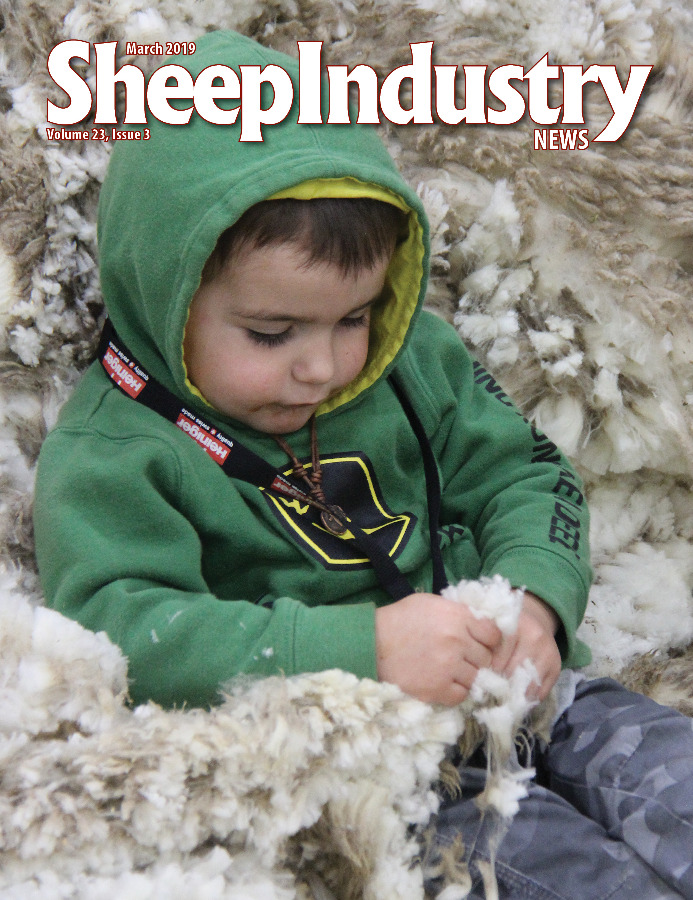
- March 2019
- President’s Notes
- Perrin Edges Shearing Field
- Guest Opinion Shearer Teaches Tips, Tricks
- Convention: Annual Convention Carries Industry Into New Year
- Convention: Award Winners Accept Well-Deserved Honors
- Convention: AWC Wants Consumers to Experience American Wool
- Convention: YE’s Prove Competitive & Determined
- Convention: Lamb Council Examines Technology
- Convention: Monitoring Fake Meat
- Convention: Stakeholders Look to Harness Data
- Convention: Managing Parasites in an Age of Drug Resistance
- Convention: Resource Mgt. Take Aim at 2019 Goals
- Convention: Fungus is Coming
- Convention: Producers, Fishermen Share Common Problems
- Convention: Make It With Wool Fashion Show
- Market Report
- Around the States
- The Last Word
Lamb Council, Meat Groups Monitoring Fake Meat
CAT URBIGKIT
The Shepherd
Danielle Beck of the National Cattlemen’s Beef Association gave a brief overview of the fake meat industry and its evolving regulatory landscape at the Lamb Council meeting in January during the ASI Annual Convention.
Lab-grown, fake meat is developed in a petri dish and is being promoted by groups such as the Good Food Institute as a “healthy, just and humane” option to animal agriculture as “slaughter-free meats.” Shying away from its “lab-grown” founding, this laboratory- or factory-based industry prefers to call its production facilities “meat breweries,” in which they produce “clean meats.”
The current controversy surrounding the fake meat industry is which federal agency shall provide regulatory oversight: the U.S. Department of Agriculture, the Food and Drug Administration, or a combination of the two. Last year, these two federal agencies announced a framework for regulating lab-grown fake meat, with USDA to have primary oversight of food production and labeling, while the FDA will have oversight of cell collection and cell growth.
These agencies are working toward a shared regulatory framework for what the government calls “cell-cultured meat derived from livestock and poultry.”
Beck noted that if it’s the USDA, the Federal Meat Inspection Act and Poultry Productions Inspections Act provide for daily, continuous inspection of the food supply, with mandatory label pre-approvals and foreign product equivalency determination. Beck maintains that this USDA system presents a fair and level playing field in the market, which is different than the FDA system. That system – based on the Federal Food Drug & Cosmetic Act – imposes risk-based food safety inspections (rather than continuous), has no label pre-approval, and provides market entry through GRAS or food additive petition process.
Beck noted that the proposed regulatory framework makes no mention of pre-market safety evaluations, which FDA traditionally has been responsible for conducting. She questioned whether a USDA veterinarian will inspect the animals that provide cells for the culturing process, since ante-mortem inspection of every animal is a fundamental component of inspection and should be applied equally to livestock used in the cell-cultured protein manufacturing process.
“It is critical that manufacturers make samples of their cell-cultured products available for independent, objective analysis,” Beck said. “Until then, stakeholders will be forced to base their assessments on the unverified claims of manufacturing companies and fake meat activists.”
The fake meat industry has been supported by investments from meat giants such as Tyson Foods and Cargill.

